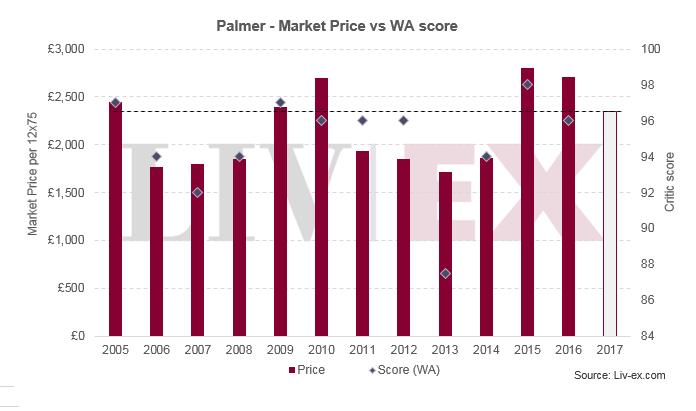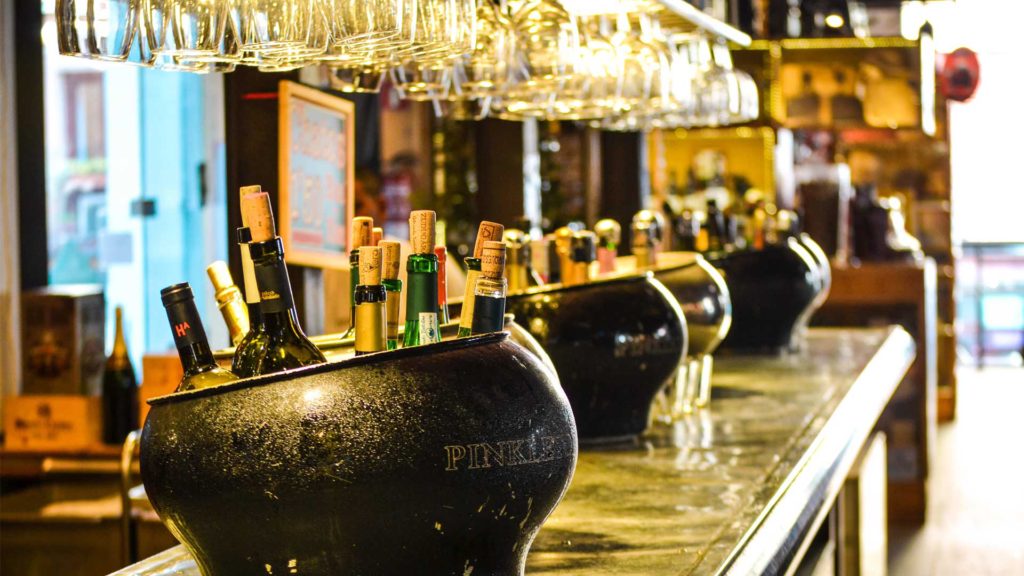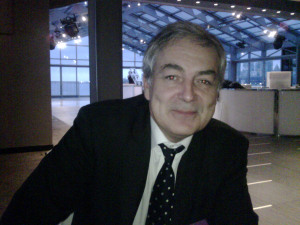Chateau Palmer 2017 has been released at €192 per bottle ex-negociant, down 20% on the 2016 release price of €240. It is being offered at a recommended retail price of £2,350 per 12×75, a decrease of 18% in sterling terms on the 2016 release of £2,880 per case.
James Suckling scored the wine 97-98 points and described it as a “sexy and well-formed 2017”. James Molesworth was also full of praise and awarded the wine 92-95 points. In his tasting note, he said that Palmer 2017 “stands out from the pack”.

Prices for Palmer are 63.6% correlated to Wine Advocate score. Based on today’s release of £2,350 per 12×75, the wine would need to receive a score of 96-97 points to be considered fair value.
Buyers looking for value may consider the 2012 vintage. The wine received a score of 96 points from Robert Parker and is available at a 20% discount to today’s release. Top vintages with several years in bottle can also be found at a small premium to the 2017.
Palmer Alter Ego was released at €48 per bottle ex-negociant, down 2% on the 2016 (€49).
Source: www.liv-ex.com



